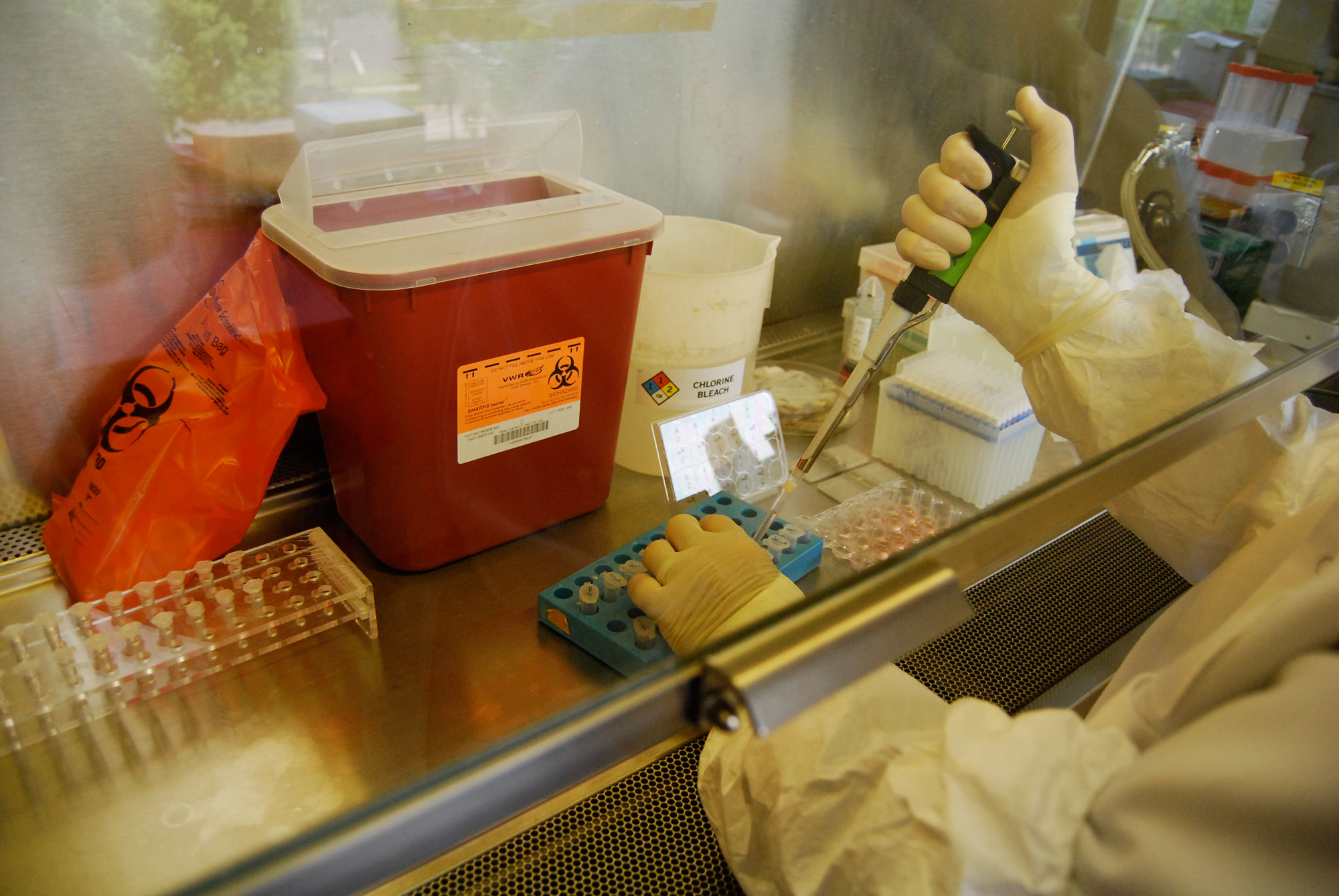U.S. Military HIV Research Program (MHRP)
Vaccine Partially Protects Monkeys from HIV-like Infection
Study Also Identifies Factors Associated with HIV Prevention and Control
New vaccine research in monkeys suggests that scientists are closing in on the critical ingredients of a protective HIV vaccine and identifies new HIV vaccine candidates to test in human clinical trials. Col. Nelson Michael, director of the U.S. Military HIV Research Program was senior author on the paper, which was published ahead of print in the online version of the journal Nature on Jan. 4, 2012.
The study, conducted at Harvard University, showed that new vaccine combinations provided rhesus monkeys with a high level of protection against SIV, the monkey equivalent of HIV. Researchers found the vaccine reduced the risk of infection by 80 percent among monkeys exposed to the virus, while monkeys that became infected had lower amounts of the virus in their blood.
A key outcome of the study is that it provides insights into the immune responses associated with protection and viral control after infection. These results point to a particular region, the V2 region, of the HIV surface that may play a key role in protection from HIV. "This finding reinforces what we learned from the RV144 follow-up studies on immune correlates completed earlier this year," noted Michael.
The RV144 study involved 16,000 volunteers in Thailand and showed for the first time that a vaccine could safely prevent HIV infection. The results from the RV144 immune correlates analyses, announced in September at the AIDS Vaccine Conference in Bangkok, raised the hypothesis that vaccine-elicited V1V2-specific antibodies may reduce the risk of HIV acquisition in humans.
Another important aspect of this study is that the viruses used in the challenge were both highly stringent and different from the strains used in the vaccines'a scenario that closely resembles what people may encounter if an HIV vaccine were available since there are many strains or subtypes of HIV found worldwide.
Plans are underway for clinical trials of a human-adapted version of the Ad26/MVA prime-boost vaccine candidate at research sites in the U.S., East Africa, South Africa and Thailand. "We have a great deal of clinical experience already with these vaccines, which means the transition from the animal work to the human work will be very easy," said Michael. The MVA component that will be tested was developed by MHRP in collaboration with the NIAID Laboratory of Viral Diseases.
More about the Results
This proof-of-concept study, which tested DNA, MVA, Ad26, and Ad35 vector-based vaccines, is the first to show partial vaccine protection in an animal model involving stringent viral challenges (SIVmac251). Preclinical studies of vaccine candidates have typically shown post-infection virologic control, but protection against acquisition of infection has previously only been reported using less rigorous viral challenges (SIVmacE660). The vaccine combinations resulted in over 80% reduction in the per-exposure probability of acquisition of infection against repetitive challenges of SIV, a virus similar to HIV that infects monkeys.
The results show that antibodies to Env (the envelope protein that makes up the outer coat of the virus) correlated with protection against acquisition, whereas both T cell and antibody responses correlated with post-infection virologic control. Critically, the presence of Env in the vaccine was essential to protection.
About the Vaccines
The MVA vaccine strategy used in the study was developed by U.S. Military HIV Research Program (MHRP) scientists in collaboration with the NIAID Laboratory of Viral Diseases. The two Ad vaccines were developed by Beth Israel Deaconess Medical Center (BIDMC) and Crucell Holland BV.
The rationale for testing these vaccine combinations derived from discussions between Col. Michael and Dr. Barouch, the study's lead author, at a scientific conference in 2008 where both the scientific novelty of the vaccine combinations selected and the possibility that such novel combinations could provide a new clinical development pathway beyond MHRP's DNA/MVA and BIDMC's Ad26/Ad35 prime boost strategies.
Study Collaborators
The study was a collaboration among the Beth Israel Deaconess Medical Center (BIDMC); Ragon Institute of MGH, MIT, and Harvard; U.S. Military HIV Research Program (MHRP) at the Walter Reed Army Institute of Research (WRAIR); and Crucell Holland BV. The research was supported by the National Institute of Allergy and Infectious Diseases (NIAID); the Ragon Institute of MGH, MIT, and Harvard; and MHRP.
About MHRP
The U.S. Military HIV Research Program (MHRP) at WRAIR conducts research to develop an effective HIV vaccine and integrates prevention, treatment, diagnosis and monitoring as part of an international effort to protect troops and reduce the risk of HIV infection worldwide. MHRP has developed five state-of-the-art international research sites in the U.S., Africa and Asia. The program successfully collaborates on HIV prevention care and treatment services, funded by the President's Emergency Fund for AIDS Relief (PEPFAR), with African militaries and in the communities where it conducts research.
More information available at: www.hivresearch.org















